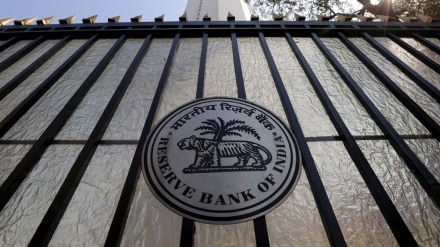By NR Bhusnurmath
The Reserve Bank of India’s (RBI) Annual Report is, in many ways, akin to the government’s Economic Survey presented in Parliament before the Union Budget. Both recount major events in the year gone by — the former with its main focus on the remit of the central bank policy, viz. monetary policy; and the latter with its main focus on the remit of the government, namely the fiscal policy domain.
There is very little that is new or has not been said before in either, other than the section on “assessment” and “prospects” in both. However, in the RBI’s case, in its Annual Report, there is one more gem: the bank’s audited balance sheet and income and expenditure statement for the year.
A careful perusal of the latter sheds light on a number of aspects of the central bank’s functioning — aspects that are often lost sight of in the context of the headline-grabbing news about the transfer of the RBI’s surplus to the government. This year, for instance, the news of the record (Rs 2.11 trillion) surplus transfer announced by the bank last month was singularly uninformed by deeper analysis. This is not surprising. In the absence of more details, it was left to commentators to hazard a guess regarding the source of the surplus.
But now, thanks to the financial statements, we are better informed. As anticipated, the higher surplus is on account of higher income and lower expenses. Income is higher by Rs 40,115 crore and expenditure lower by Rs 83,342 crore, showing the “profitability” of the central bank. Since it was set up not in pursuit of profit but to achieve certain objectives, one needs to study the balance sheet of the RBI to understand how it has managed the monetary policy.
It is the balance sheet, rather the size of it, that gives us a true insight into the operation of monetary policy. The reality, as Garreth Rule of the Centre for Central Banking Studies, Bank of England, puts it, is that “changes in the balance sheet through time…reveal how successful the central bank has been in achieving its goals and how sustainable its current policy objectives are”.
He adds, “Although most central banks have moved from quantitative targets for monetary policy operations to price targets, where the domestic interest rate and/or the exchange rate are the operational target for monetary policy, the central bank’s balance sheet remains the best place to understand policy implementation.”
With that in mind, let’s turn to the RBI’s balance sheet. Remember, 2023-24 was the year in which the RBI was focussed on “withdrawal of accommodation”. In balance sheet terms, this should have translated into a reduction in the size of its balance sheet.
Over the past two years, the Fed, for instance, has shed roughly $1.5 trillion in treasury and mortgage bonds that it accumulated during the Covid years when it was trying to stimulate the economy. The Fed’s balance sheet has shrunk to around $7.5 trillion from about $9 trillion during 2022. In contrast, the RBI’s balance sheet increased 11% in 2023-24 from Rs 63.45 trillion to Rs 70.48 trillion.
What explains this apparent contradiction? For answers, look at the way the two main heads — investments in domestic bonds and investments in foreign currency assets — have moved over the year. The simplest way for the RBI to withdraw liquidity is by selling government bonds through its open market operations. Bonds thus sold would come from its holdings accounted for under the head “Investments-Domestic BD” on the assets side of the balance sheet, resulting in a decrease in assets and hence a decrease in its balance sheet size.
However, the decrease in its domestic bond holdings by Rs 0.43 trillion has been more than offset by the increase in foreign currency denominated assets by Rs 4.80 trillion. The RBI’s investments overseas increase when its foreign currency reserves go up, typically as a fallout of its intervention in the forex market in a bid to prevent the rupee from depreciating beyond what the bank is comfortable with. The not-so-desirable consequence of this is that it is also at odds with the bank’s stated objective of withdrawal of accommodation. It is precisely the opposite: infusion of liquidity. Thus, the size of the RBI’s balance sheet has grown as a direct result of it pursuing two conflicting objectives — trying to withdraw liquidity and at the same time attempting to shore up the rupee.
Economists call this the impossible trinity. Also known as the impossible trilemma, this says it is impossible for any country (or central bank) to have a fixed exchange rate, allow free movement of capital, and pursue an independent monetary policy at the same time. One of the three has to give. In the Indian context, it is clear from the RBI’s balance sheet that monetary policy had to take a back seat to the bank’s other objective of keeping the exchange rate of the rupee within an internally pre-determined band. True, we no longer have a fixed exchange rate, and the RBI goes to great lengths to say it has no view of the level of the exchange rate and only intervenes to curb volatility. But its actions show the challenges it faces.
The author is Adjunct professor of banking & finance, IMT Ghaziabad
Views are personal
